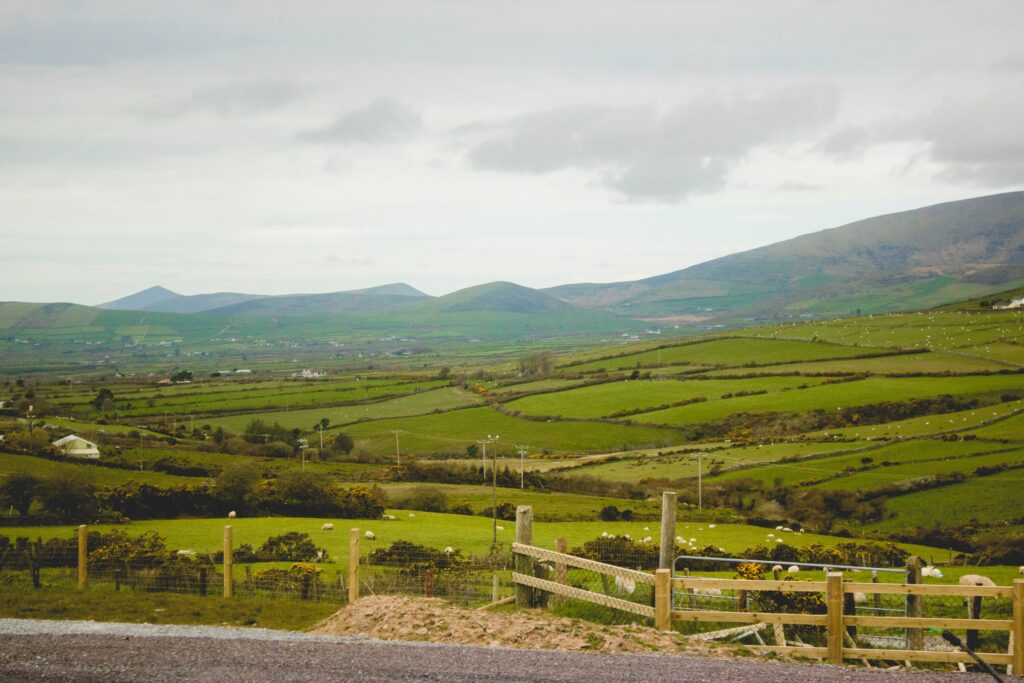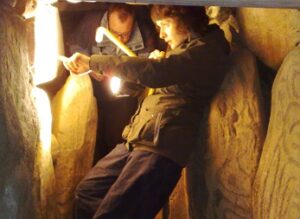Professor Frank Convery’s recent blogs explore the complex, contentious and important relationship between climate change and agriculture, looking at the context, challenges and potential solutions for dairy, beef and sheep farming in Ireland. In this interview he talks about his experience, motivations and the role of universities and research in policy formation.

Frank Convery
Adjunct Full Professor of Environmental Policy
UCD Profile
Q. You’ve had a very varied and full career in academia and in the policy world. Could you tell us about some of the roles or projects you found most rewarding or which contributions to environmental policy you’re most proud of?
A. Good universities have two important qualities: a faculty with deep expertise in key areas that are important, and the freedom to carefully but fearlessly bring this knowledge to the public square. They also have a disadvantage: this new knowledge is typically produced in disciplinary silos, and communicated mainly to peers, while we know that a lot of new knowledge emerges from deep interactions across disciplines. When I came to UCD as a new Professor of Environmental Policy with the freedom to roam I decided to prioritise finding ways that worked bring the great depth of knowledge on environmental issues across many disciplines into the public arena.
We began by convening workshops, where we’d invite academics of talent in particular areas to present at workshops knowing that impressing fellow academics is the best guarantee of quality And of course intellectual excellence does not recognize institutional boundaries; we included academics from other universities wherever they added value. Those presentations were converted into papers, that we then published as a rolling series of books.
Secondly, this experience created an appetite for cross-disciplinary engagement. When I came to lead the application for funding for the Earth Institute, we had a sense of what works and what doesn’t and a network of talent from which to put together a credible and successful application.
Thirdly, at the time, there was a poor understanding that (a) the market untrammelled would fail to protect public goods like environment and (b) designing and delivering policies that would correct such market failure in ways that were effective, efficient and fair requires credible evidence and skill.
Working with Peter Clinch, we decided to help fill this gap by starting a research Master’s programme in UCD in environmental policy which required a major thesis. Out of that came a PhD programme. We nudged the students into doing theses on current or recently past issues of significance This developed an evidence base and an international reputation, and gradually that cadre of people got jobs, many of them in government departments and agencies. I feel that this was a valuable contribution because it embedded new ways of thinking, knowledge, expertise, ideas, values and so on in the Irish policy process, that might not have been there before.
“Failure is the best teacher. The failure of the carbon tax, when the proposal was withdrawn after five years, was very, very sobering, and embarrassing as well. Then we turned to creating an emissions trading scheme, which is another market instrument. This succeeded and we managed to get it launched in 2003”
Finally, on the policy side, I became heavily invested in the European project, first in trying to help implement the EU’s carbon tax which it proposed in 1992 I worked on the fringes of the European policy system and got to know the people involved there. I got more heavily involved through starting to run the research networks that were supporting policy in relation to emissions trading and market-based instruments. I had a seat at the table to a certain degree.
Failure is the best teacher. The failure of the carbon tax, when the proposal was withdrawn after five years, was very, very sobering, and embarrassing as well. Then we turned to creating an emissions trading scheme, which is another market instrument. This succeeded and we managed to get it launched in 2003. My role in that I’d say is quite interesting and significant in a way.
Other than that, there are two recent roles that might be worth a mention. I served on the Climate Change Advisory Council from 2016 to 2021. I was also involved in the development of Food Vision 2030. The latter was probably more important for what we’re talking about here. There were 33 members, so it was a large, rather unwieldy group, but there was a great amount of expertise around that table. Even though we were meeting remotely, I learned a huge amount about the issues, and what the key challenges are. It was also the main stimulus to my decision to put together a series of evidence-based blogs on the design and deliver of climate policy for ruminant farming in Ireland. The evidence from the design and delivery of climate policy for energy, industry, transport and housing is clear. You only achieve outcomes (emissions reduction and carbon storage at scale) when:
- The mission is decided
- There are clear and unambiguous incentives to reduce emissions by a mix of rewards (pay for performance) and penalties (‘polluter pays’)
- There is an innovation strategy in place designed to deliver better and cheaper emissions’ reduction choices
- An integrated mix of policy instruments (information, taxes/levies, subsidies, regulation, innovation) are designed, delivered and amended as knowledge evolves and circumstances change.
The same mix will be required if climate policy for ruminant farming is to succeed, but they are not yet in place.

“[Food Vision 2030] was also the main stimulus to my decision to put together a series of evidence-based blogs on the design and deliver of climate policy for ruminant farming in Ireland.”
Q. Tell us a little bit more on initial ambitions for the Earth Institute when it was first established
A. UCD will underperform as a research university and as a learning environment for students unless it succeeds in fostering productive interactions across disciplines. My personal interest, and I think an interest of the funders as well, was to bring learning down to where things are done. My particular expertise is in the policy side of that. I saw the Earth Institute, really, from the beginning, as a key resource, mechanism and instrument to do that. Secondly, an idea which hadn’t happened yet, but which Tas and the current leadership have since done splendidly is the creation and delivery of capacity building within the university, within Ireland and internationally, through interdisciplinary teaching programmes, both at undergraduate and at postgraduate level. Those were the two visions.
Q. You’ve worked a lot with different types of organisational structures and used these structures in creative ways to achieve particular ends, it seems
A. Thank you. Yes, organisations matter. If you don’t have the right structures, it’s very hard to deliver ambitious outcomes, especially in very big organisations, like government departments and universities. In the blog series, one of my ambitions is to extend the quality of the debate both within and beyond the Ag silo, learn from evidence about what works, and get a lot of other serious people involved, because it can’t succeed without reaching beyond that. For example, in the Irish power system, the Departments of Taoiseach, Finance and Public Expenditure are central to making policy progress at scale, and this includes climate policy for ruminant farming.
“I realised the policy system is madly busy, Ministers have 22 competing agendas. There are people coming in to talk to them every week, peddling a usually directly self-interested line. You really have to prioritise and say this is what you should do. This is why you should do it, this is how you should do it, and by the way, I’ll help you and mobilise some interest groups, too.”
Q. Let’s go back briefly to your own disciplinary background, would you call yourself an environmental economist?
A. Economics can be defined as the science of choice. I started out as a forest economist, because I did forestry in UCD way back and was inspired by the late Seamus Sheehy to make economics the fulcrum of my thinking which resulted in me going to the US to do a PhD in forest economics; it evolved to natural resource economics, and then it became environmental/climate economics.
Q. How do you imagine or understand the role of universities and research institutes in addressing social challenges? In particular, how can research be integrated into policy?
I learned a lot on that front from the late David Pearce, a professor at University College London (UCL). David was almost a one-man band on environmental policy, in terms of influencing policy in the UK, the EU and the US. The thing I learned from him, most of all, was the importance of showing up. You have to actually be there. He was in the OECD in Paris, the European Commission in Brussels, the World Bank and IMF in Washington etc. regularly. Wherever the power was, he went. He had no personal agenda at all. He didn’t want to be hired by them or be the boss of them or anything, he wanted them to do things to protect the environment at scale, and to do them smartly. So that’s crucial: I recognise that a lot of academics aren’t personally disposed in that direction. It’s a minority capacity in a way. But for those who have the inclination, it’s really important that they do it.
The second thing is to bring to the table something that the policy system finds useful and operational I remember decades ago meeting with the Minister for the Environment. He’d just been appointed, and he asked me to come in, talk to him. He wanted ideas. Of course, I spent a whole day ahead of time putting together ideas. I went to meet him and he was totally exhausted, as ministers often are. I worked through my list, and he listened politely. Then he looked at me and he said, “Frank, those are all great ideas, and I can do one of those – you tell me which one and I’ll do it”.
That was a terrific lesson, because I realised the policy system is madly busy, Ministers have 22 competing agendas. There are people coming in to talk to them every week, peddling a usually directly self-interested line. You really have to prioritise and say this is what you should do. This is why you should do it, this is how you should do it, and by the way, I’ll help you and mobilise some interest groups, too.
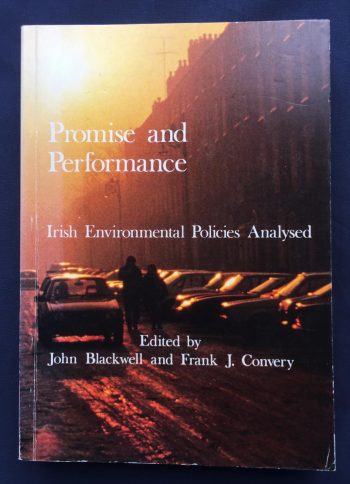
Q. The next question is about collaboration and interdisciplinarity – how do you get people to work together across sectors, disciplines and so on? What kind of mechanisms and approaches work in terms of building coalitions to make things happen?
A. Organisations like the Earth Institute are important, , because they have a mandate to do so, which is really important. When I came to UCD, as a new professor, I didn’t have a mandate per se, but I did have freedom to roam. What I found was, and I think it’s universally true, that at the organisational level, like at the level of some Deans, there’s often suspicion about interdisciplinary collaboration, especially if it might threaten bottom lines. But when you get down to intellectually engaged academics, there’s nearly always a lot of interest because, while they’re working at their own frontier, they see a value in wider engagement; and some of them are interested in actually changing outcomes, and they see their work as playing a role in changing these for the better . At that level, I actually didn’t experience resistance, really. However, I did have an endowed professorship, and I had total freedom. Nobody was telling me what to do or how to do it. I would say having a structure and an enabling mechanism is really important.
The other important mechanism I think, is to have a particular outcome or ambition in mind that resonates with academics, for instance, to deliver a book. If people get a chapter in the book, you know, that can be important, professionally and often the same work can be re-fashioned for a peer reviewed journal. For the policy system, having a theme came be good. For instance, at that time, when I started at UCD, air pollution in Dublin was a huge issue. We took that on and worked backwards. We had engineers, we had scientists, we had a lot of people, who knew bits of that story In Promise and Performance, the first book we did, that cover was Georgian Dublin on a smoky night, pitch black. People respond to that.
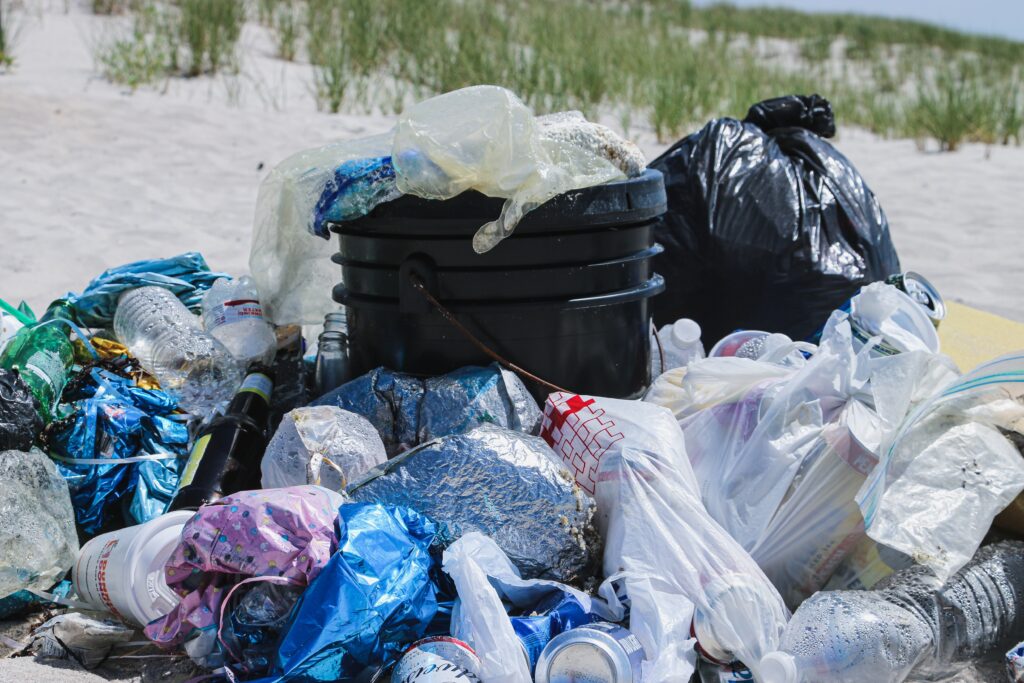
“It’s almost a universal rule that the market on its own will not solve environmental problems. You need policy that corrects for market failure, which means government engagement.”
Q. How do you understand the role of the market in relation to the environment?
A. It’s almost a universal rule that the market on its own will not solve environmental problems. You need policy that corrects for market failure, which means government engagement. One simple example: in 2004, Elon Musk invested $30 million in a start-up called Tesla, which revolutionized the prospects for electric cars, by dramatically reducing battery costs and increasing their range. However, in 2009, the company faced a cash crisis, and only survived because the US Department of Energy loaned it $650 million.
There’s a very influential article by Garret Hardin called ‘The Tragedy of the Commons’. He took the simplistic example of a hypothetical commonage in England in a feudal world, on which everybody could keep their own sheep and cows. The tragedy was that for an individual farmer, it is to his or her individual advantage to add another cow or two to the commonage, because, in Hardin’s model it was free to do so. However, beyond a certain point, such additions began to destroy the commons to the detriment of all We see this tragedy in action as regards climate change. Most of us accept that every ton of carbon dioxide, methane, or nitrous oxide we emit contributes to limiting the life choices of our children and increases the risk that they will deprived of the chances we have enjoyed. But we also know that, in the absence of clever and coherent policies, restraint on our part will prove fruitless, because other emitters will continue to emit without restraint. The incentives are not aligned; unless this changes, we will all slide slowly but inexorably towards collective disaster.
As a way of overcoming the tragedy of the commons, the OECD came up with the polluter pays principle, which also attracted me: If the polluter does pay in relation to how much he or she pollutes, that’s an incentive to reduce pollution because it’s a cost – incentives are aligned. You’re integrating environmental conservation into normal decision making.
In Ireland, led skillfully by then Minister Noel Dempsey, we led the world in putting this idea into direct action with the introduction of a plastic bags levy of €0.15 per bag at point of sale in grocery stores. Before 2002, a common feature of the Irish landscape were hedgerows and trees adorned with very slowly decaying plastic bags. After the levy, this visual and ecological blight diminished, and then disappeared. The features of this policy and why it succeeded are discussed in a master’s research paper by Simon McDonnell, one of our students, which was published in Environmental and Resource Economics, 2007. It has the following features: the mission was to get rid of plastic bag pollution; it focussed the polluter pays principle directly on the source, i.e., plastic bags; the levy was high enough to get the attention of users; they had low cost alternatives –buying ‘permanent bags’ would eliminate the need to purchase; the revenues were recycled to fund waste infrastructure and research and innovation; the Revenue Commissioners were also supported by some revenues to integrate the collection of the tax into the VAT system.
“The EU is by a long stretch the largest the largest dairy exporter in the world. I think it’s worth €18 billion versus imports of €1 billion in imports. If some consumers turn away from Irish product because its carbon footprint is not competitive, local suppliers who are will be delighted to fill the gap we leave.”
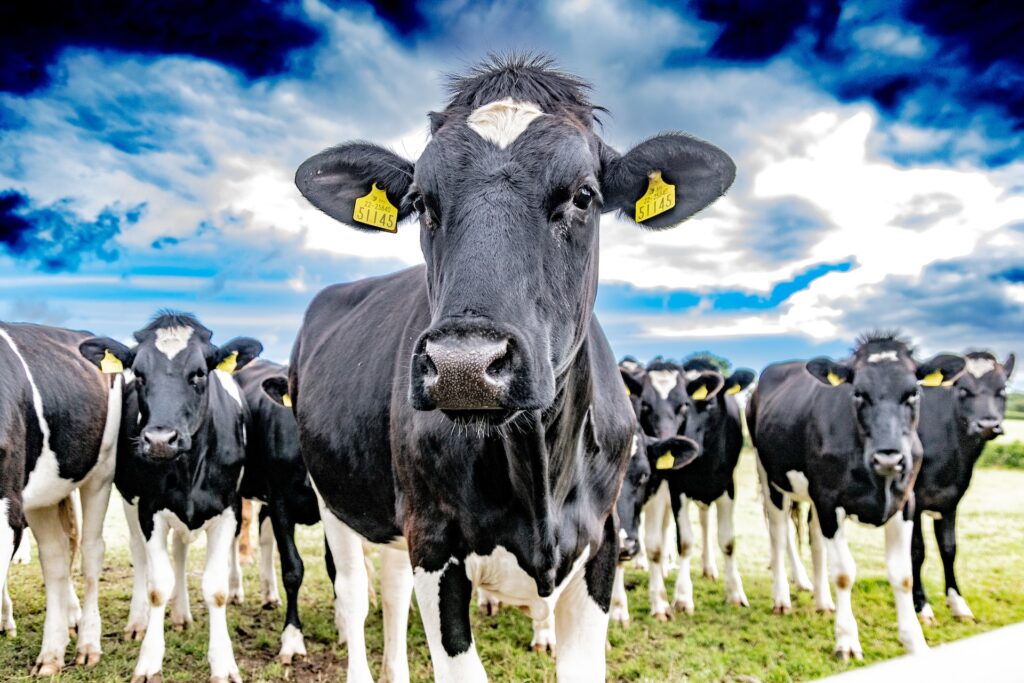
Q. What was your motivation for doing this blog series – why did you see the need for intervention around agriculture and climate in Ireland?
A. The motivation was that the quality of the debate around climate policy for agriculture was very variable and at times very misleading. When I was on the Food Vision 2030 committee the quality of the debate was generally very high but in the public domain, so to speak, it was often very poor. The early messaging by some farmer organisations was extremely simplistic. They were saying that Ireland has the most climate efficient agriculture in the world, and if we take action to reduce emissions, other farmers will take our place and their food will be much more carbon intensive, the carbon leakage argument.
Initially, I accepted that argument, it sounded plausible to me. But, you know, the great joy and core responsibility of the academic is to say, well, let’s sit back, pause and ask ourselves: Is it really true? And this is what I found:
I discovered that:
- The “we’re the best” messaging was based mainly on a report of the EU’s think tank (its Joint Research Centre report. The good news is that the JRC is a credible source; the bad news is that its report was published in 2010, which was based on 2004 data. That set off alarm bells. Would such case making survive scrutiny in a court of law? [On Feb 3, 2019, Ornua (KerryGold) had won a court case in which its grass-fed claims were challenged; the quality of the dairy sector’s data was a key to the decision]
- The three big markets for Irish, dairy, and beef and lamb are the EU, the UK and the US. In 2021, the EU accounted for 37%, the UK is 26% and the US is 6% of total sales adding up to about 70% of total exports in 2021I started to look at those three markets, so there is a blog devoted to each. I was quite shocked to find that producers in all three are likely to do a lot to reduce the climate footprint in their own supply chains, epitomized by the US, where, in the Act recently signed by President Joe Biden, over $20 billion are allocated to this purpose Even if it turns out that Ireland today is the best in the world, five years from now, if we keep admiring ourselves, while these other markets actually roll up their sleeves and reduce emissions at scale, we’re going to lose.
- The leakage argument – if we reduce output, it will be replaced much less carbon efficient out, with Brazil often mentioned in this context – also seems to be highly questionable in these three markets. In our three largest markets, the big competition is from local farmers. The EU is by a long stretch the largest the largest dairy exporter in the world. I think it’s worth €18 billion versus imports of €1 billion in imports. If some consumers turn away from Irish product because its carbon footprint is not competitive, local suppliers who are will be delighted to fill the gap we leave.
There’s also the policy threat. The UK now of course has complete freedom in terms of its trade. Their Climate Committee has essentially said when their carbon performance really improves, they’ll have to have some kind of a tariff on products that are coming in, that don’t meet their standards. Of course in the EU, no individual member can impose trade barriers on others, so we won’t have that threat in this market
As part of the blog series, I also look back at our recent history. Teagasc has done some terrific things, one being the integration of environmental data into their annual farm survey, including data on climate. And their data shows that over the last six years, there’s been zero improvement in the average carbon efficiency per kilo of our beef and lamb output. There has been some small improvement in the carbon footprint of milk over the same period.
Q. Do you see one vulnerability as stemming from the possibility of Ireland’s external markets changing their consumption habits?
A. One threat is that consumers in key markets start to notice, and they will notice because there’s a metrics revolution underway, whereby, just as consumers today who are considering buying a house have a carbon and energy efficiency label available to inform their purchasing decision, in the future they will have an equivalent metric to inform their choices for their meat and dairy purchases.
Some countries will decide to be world class performers in climate. The EU is likely to have a system of carbon footprint labelling. As I said, the US is especially interesting because California is way ahead of the rest of the world in terms of climate policy for agriculture. I think they’ll be quite tempted to have some kind of trade barrier, to stuff that doesn’t meet their standards. So those are the two big threats I think, and they never appear in the rhetoric or the language, the public debate.
Q. Can you give us some context on or comparison with New Zealand which is often compared to Ireland in terms of agriculture
A. They are a very like ourselves in three aspects: their systems are pasture based, they are hugely dependent on exports, and emissions from agriculture comprise a huge proportion of their total emissions.
On the policy side of things, they are ahead of us it a number of respects; most farms will be obliged to take on the climate challenge (In Ireland it is still ‘opt in’, so, unlike NZ, Irish farmers have an incentive to ‘free ride’); from 2025, information will be available in NZ on emissions per farm; a levy per ton of emissions will be charged, so there will be a market incentive to reduce emissions, which we do not have; a company (BioTech CALM) is leading the development of a technology that is specifically directed at reducing emissions at scale from pasture-based systems.
From 2025/26, NZ producers will have tariff-free access to the UK market, and will be able, if they chose to do so, to re-direct some of their output from China to the UK. The decision will depend on relative prices in these two markets, and strategic concerns. If their milk and meat products have a carbon footprint advantage over their UK and Irish competitors, this will give them an advantage with some UK consumers.
“The enemy is emissions and lack of carbon removal. Policy has to correct both of those problems for two reasons: it is the right thing to do, and we need to do it to ensure that we deliver a carbon footprint that is competitive in key markets.”
Q. What do you see as some of the solutions either at micro or macro levels, in terms of what can be done?
A. The enemy is emissions and lack of carbon removal. Policy has to correct both of those problems for two reasons: it is the right thing to do, and we need to do it to ensure that we deliver a carbon footprint that is competitive in key markets. Our ruminant exports in 2021 were €7.9 billion, of which about 65% of it was dairy. If that even dips by 5%, that’s still a loss to rural Ireland of €350 million a year.
There are some developments on the policy side that are encouraging. For example, the 2023-27 CAP. Europe has decided that 25% of the direct payments have to be used for environmental purposes. So that’s a huge step. The Irish version of this is to give farmers eight options. If you do two of them, then that’s compliance. So for the first time ever, every farmer in Ireland is going to have to do it because otherwise, they won’t get their payments. One thing that is an obvious action to tick the box immediately is reducing fertiliser use. Because of the current price, there’s a huge commercial logic.
However, on its own the new CAP won’t come anywhere close to what either needs to be done to meet the 25% target, or I think, to protect our markets. The developments by Teagasc are really important. Even though we did nothing much on the abatement front between 2014 and 2020, Teagasc continued working along, including producing a MACC (marginal abatement cost curve) which is really important. It hasn’t been tested on the ground, but it’s a crucial start. This shows farmers, these are the things you could do.
A number of farmers have rolled up their sleeves and are taking action. These include Jimmy Cotter, Gail O’Sullivan, Jane Shackleton and Ben Tyrell, but there are many more, and their number is growing.
“On its own the new CAP won’t come anywhere close to what either needs to be done to meet the 25% target, or I think, to protect our markets. The developments by Teagasc are really important. Even though we did nothing much on the abatement front between 2014 and 2020, Teagasc continued working along, including producing a MACC (marginal abatement cost curve) which is really important.”

At this point, we face two alternative outcomes which I call Scenarios A or B
Scenario A – Current and CAP 2023-2027 Policies
If there is no change in policy, under this Scenario, we are likely to end up with a hybrid binary performance, the first being those growing number of farmers who decide to take action and do so with persistence and skill, learning by doing, and delivering a carbon footprint that means their output will be carbon competitive. The second category will be those farmers who decide to do the minimum, and deliver output that does not command the loyalty and affection of discerning consumers in key markets. The sector as a whole will be not be close to being a world leader, but a significant subset of farmers and companies will.
Scenario B – a widening and deepening of policy to achieve global leadership
The second Scenario (B) is where there widespread and deep commitment to taking on the challenge, most Irish farmers engage, and the result is net reduction/carbon removal nationally of at least 25% achieved by 2030, and an average carbon footprint for Irish dairy and ruminant meat that is independently recognized as competitive, and that would, if challenged in court, win the case. Under the scenario, Ireland, will be, in Food Vision 2030 terms, “a world leader in Sustainable Food Systems (SFS) over the next decade. This will deliver significant benefits…and will also provide the basis for the future competitive advantage of the sector”.
My passion is to find ways that work to deliver Scenario B. I devote Blogs 9 (Policy Essentials), 10 (CAP 2023-2027), 11 (Innovation) and 12 (Policy Integration) to the ‘how’ of achieving this. There is no doubt that we can do it. There is still a question mark around whether we will do it.
